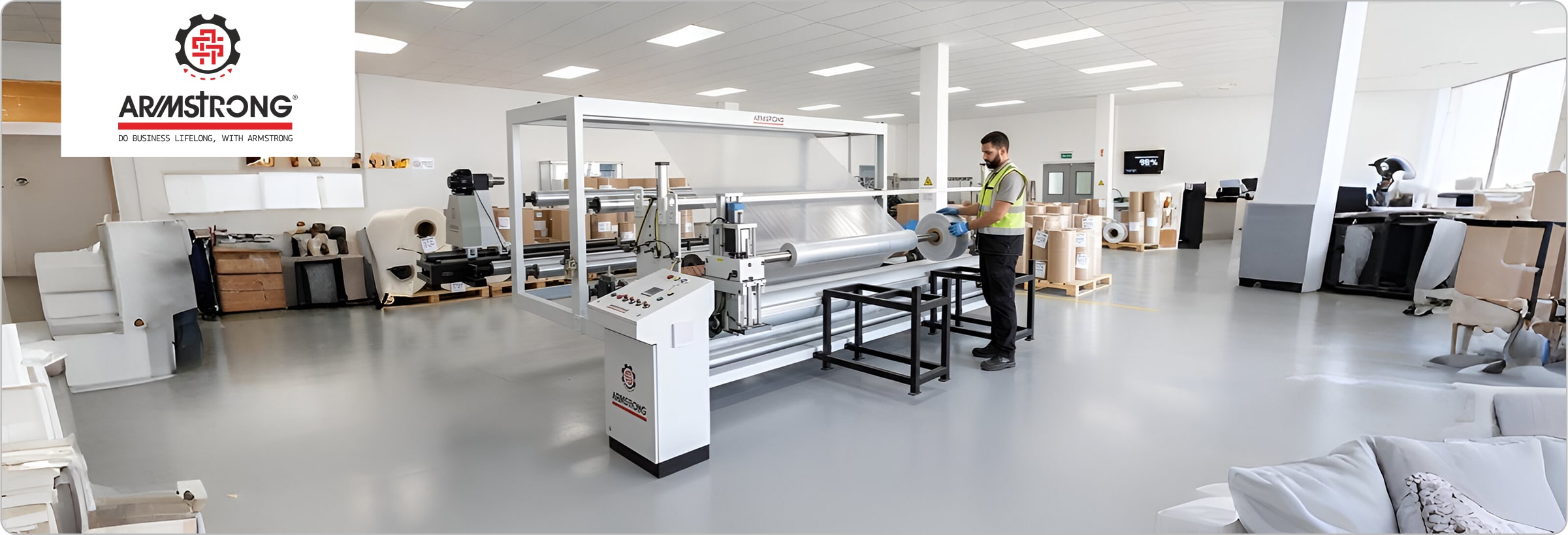From Large Rolls to Precise Cuts: The Benefits of Automated Roll Conversion


One area where machines have made a big difference is converting large rolls of material into smaller, more manageable sizes. This process, called automated roll conversion, is essential for many industries, and it helps businesses save time, reduce waste, and meet customer needs efficiently.
Imagine you have a giant roll of paper, plastic, or fabric that is too large to use as it is. What if you only need a smaller piece from that roll? This is where roll conversion comes in. A special machine takes the large roll and cuts it into smaller rolls of the exact size needed. For example, if you have a big roll of 5,000 meters and your customer only needs 200-meter rolls, the machine will break the big roll into several smaller ones.
These machines don’t just cut the material they also rewind it neatly onto new rolls. This is done automatically, so there’s no need for someone to do it by hand. That’s why these machines are called automated roll converters. They save time and make the process much more accurate.
A large roll of material is placed on the machine.
The operator tells the machine how long each smaller roll should be. For example, 200 meters.
The machine uses a unique cutting mechanism, such as a rod-less cylinder, to precisely cut the material. After cutting, the material is rewinded onto smaller rollers.
The smaller rolls are neatly prepared and ready to be used or shipped to customers.
The entire process happens automatically, which means less work for people and fewer chances of mistakes.
Every customer has different requirements. Some may need long rolls, while others prefer shorter ones. Automated roll conversion helps businesses meet these unique needs without any hassle.
Cutting and rewinding large rolls by hand would take much time and effort. Machines can do this job quickly and efficiently, freeing workers to focus on other tasks.
By precisely cutting the material to the required size, these roll conversion machines help reduce waste.
When rolls are cut and rewound manually, uneven edges or loose winding can occur. Automated machines ensure that each roll is perfectly cut and tightly wound, improving the overall quality of the product.
Since the process is fast and automated, businesses can produce more rolls in less time. This means they can handle more orders and grow their business.
Companies that produce packaging materials like plastic wrap, paper, and foil use roll converters to prepare rolls of different sizes for their customers.
Fabric manufacturers often need to supply smaller rolls of fabric to their clients and roll conversion machines make this easy.
Printers use rolls of paper, and automated roll converters help them prepare the correct sizes for different printing jobs.
Companies that produce labels and stickers use roll converters to cut large rolls into smaller ones for easier handling and application.
Automated machines ensure every roll is cut to the required length, leaving no room for error. This precision is essential, especially for industries where even a tiny mistake can cause problems.
Since the process is automated, businesses save money on labour costs. Additionally, by reducing waste, companies can maximize the use of their materials, further cutting costs.
Modern roll converters are user-friendly. With simple controls and automatic processes, even someone new to the machine can quickly learn how to use it.
These devices are versatile since they can generate rolls of varied diameters. The machine can easily handle whether a customer needs 100 or 500 meters.
Suppose a company produces plastic sheets in large rolls of 5,000 meters. A customer places an order for 20 rolls, each 250 meters long. Instead of manually cutting the big roll, the company uses an automated roll converter. The machine quickly cuts the big roll into 20 smaller rolls, each 250 meters long, saving time and ensuring accuracy.

Automated roll conversion transforms several sectors. It helps businesses save time, reduce waste, and deliver high-quality products to their customers. These machines ensure precision and efficiency for packaging, textiles, printing, or any other industry.
Armstrong is the name to trust if you are looking for the best automated roll conversion machines. With advanced technology and user-friendly designs, Armstrong’s machines can quickly handle your roll conversion needs. Upgrade your business with Armstrong and experience the benefits of automation today!
 Brochure
Brochure